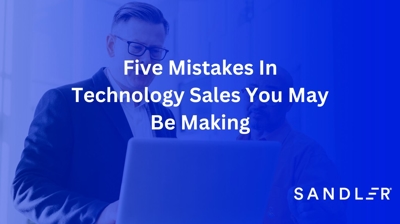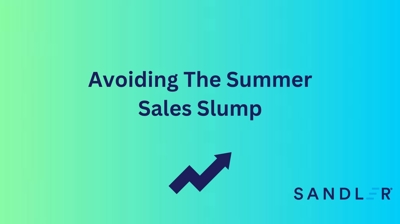Betty’s quarterly numbers were low. Her manager, Milt, asked her to do some role-plays so they could identify potential areas for improvement. They spent about 20 minutes roleplaying through various scenarios – at which point Milt called a time-out and asked, “Betty, do you realize you’re positioning us in exactly the same way with every person to whom you speak?” Betty looked at her boss quizzically and asked: “Is that a bad thing?”
Milt gave a little smile and said, “It could be.”
HOW DO YOU POSITION YOUR PRODUCT OR SERVICE?
When you first meet with a new prospect, how do you position your product or service? How do you characterize the value it delivers? How do you decide which elements will have the strongest appeal to the prospect?
It’s difficult to determine which aspect of your product or service will hold the most meaning for the prospect until you understand the prospect’s motivation for the potential purchase. Once you’ve discovered that, you can position your product or service as a best-fit from the prospect’s perspective.
So—what motivates an individual prospect to buy from you?
One prevalent theory is that people buy either to gain pleasure…or to avoid pain. In a broad sense, that’s correct. In fact, psychologists suggest that those are the two reasons that drive people to take any action!
Can the answer really be that black and white? Consider this: the VP of Production at a manufacturing company has been wrestling with a production line problem for some time, and he has been unable to solve it. This problem is hindering production and negatively impacting profits. The pressure the VP is getting from his CFO is causing him considerable worry—worry that results in many sleepless nights. That’s pain, right?
The VP engages a process engineering consultant to help him solve the problem. With the consultant’s analysis, input, and recommendations, the VP is able to solve the problem and bring production and profits back to desired levels. The pain is gone. No more pressure from the CFO, and no more sleepless nights.
The VP now feels relieved and experiences an overwhelming sense of accomplishment and satisfaction. But, hold on! “Relief,” “sense of accomplishment,” and “satisfaction”— wouldn’t those feelings be characterized as pleasure? Of course!
Here’s the big question: was the VP’s motivation to hire the consultant-driven by the desire to eliminate pain or the desire to gain pleasure?
The answer is … you don’t know. It could be either. Your job is to find out which of the two motivators is operating in the most dominant way in the prospect’s world. And to figure that out, you need to ask good questions.
Think of pain and pleasure as opposite sides of the same “coin.” One side of the coin represents the situation from a negative (or pain) perspective; the other side represents the situation from a positive (or pleasure) perspective. And here is the most important thing to remember: the prospect—NOT YOU—gets to choose which side faces up.
The only reliable way to determine which side of the coin matters most to a particular individual is to ask the appropriate questions … and listen carefully to the prospect’s answer. Pay close attention to the words, the tonality, and the body language, and you’ll know whether to position your product or service as something that will help the prospect move away from an undesirable situation (pain) or move toward a desirable situation (pleasure).
Questions to help you make that determination include:
- “What precipitated your interest in (your product or service)?”
- “What specifically are you hoping I can do for you?”
- “What would the most ideal outcome be?”
Assume you were to ask that CFO that first question, “What precipitated your interest…?” Consider the stark difference between these two possible responses:
RESPONSE ONE: I’m getting a lot of heat from our CFO to fix the assembly line bottlenecks which have not only thrown our production numbers off, but also driven up our maintenance costs…both of which, he continually reminds me, are eating into our bottom line.
RESPONSE TWO: My goal for the next 60 days, and my commitment to our CFO, is to get our production numbers up by 10%, back to where they were in the first quarter of the year … and at the same time, to smooth out the fluctuations in production throughput and reduce maintenance costs.
Each answer describes the assembly line production situation, but each does so from a different side of the coin. One frames the situation from the perspective of the problem to be solved; the other frames it from the perspective of the goals to be achieved.
THE WINNING EDGE
Avoiding pain or securing pleasure. There’s a subtle difference between the two positions likely to motivate a prospect. Yet by recognizing which side of the pain/pleasure coin is facing up, and by framing the discussion of your product or service from that perspective (thereby matching the prospect’s motivation), you can gain a slight edge. This advantage often makes the difference between making the sale and not making the sale.
Jeff Borovitz
Jeff Borovitz is known for triple-digit revenue and profit increases, with 28 years of experience as an award-winning quota busting salesperson, sales manager, general manager and business owner. Connect with Jeff:







